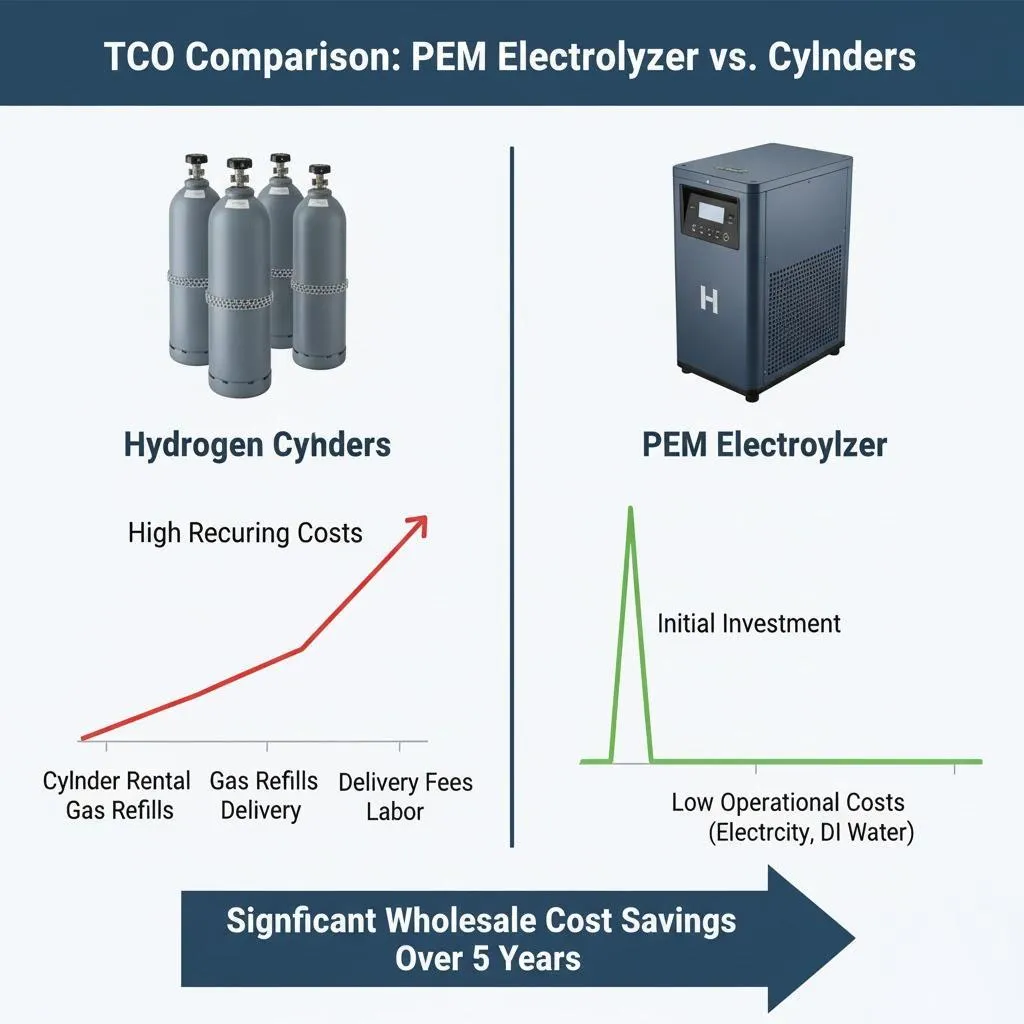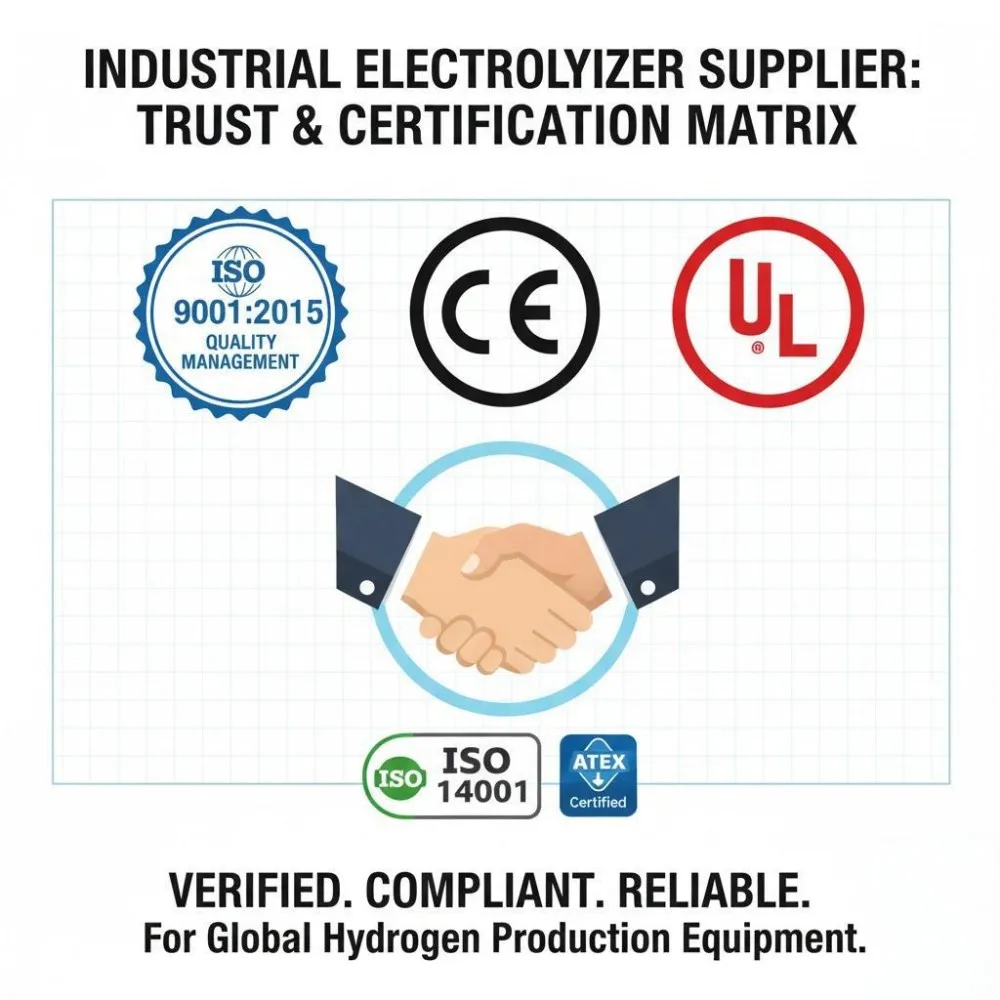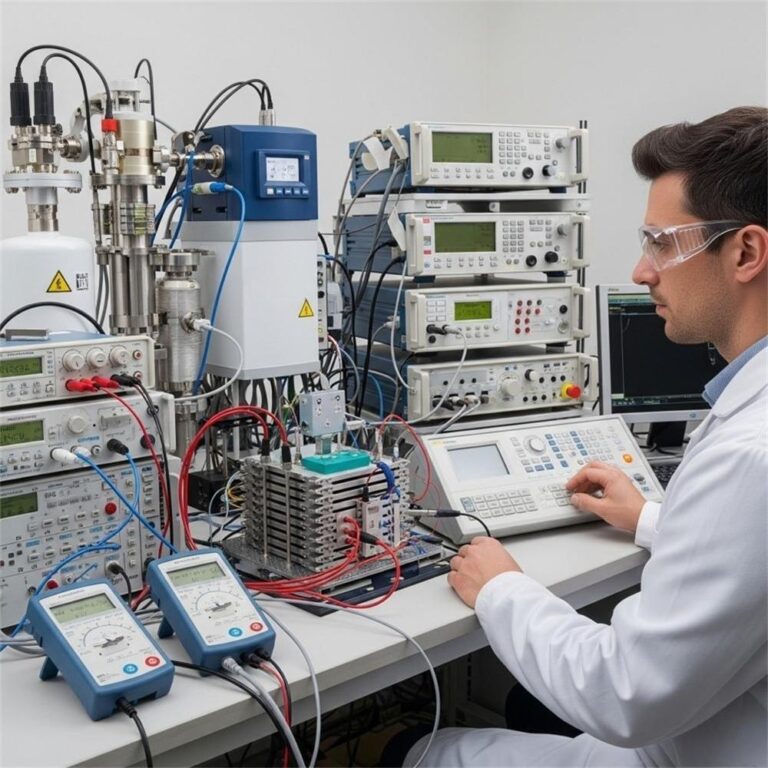Introduction
Imagine a world where vehicles, industries, and even homes run on clean, emission-free fuel—hydrogen. This isn’t a distant dream. It’s a rapidly emerging reality driven by innovations in hydrogen generator technology, most notably through the electrolysis of water.
Hydrogen, often hailed as the fuel of the future, serves as a clean energy carrier with the potential to revolutionize our energy landscape. As the global demand for decarbonization intensifies, water electrolysis emerges as a cornerstone technology in sustainable hydrogen production.
This article provides a comprehensive guide to hydrogen generator electrolysis of water, exploring how it works, its different technologies, water quality requirements, efficiency optimization, and its future outlook in renewable energy.
Electrolysis Basics: Unlocking Hydrogen from Water
Water electrolysis is a chemical process that uses electricity to split water (H₂O) into its elemental components—hydrogen (H₂) and oxygen (O₂). This seemingly simple reaction holds the key to generating clean hydrogen fuel.
Key Chemical Reaction
[ 2H₂O (l) \rightarrow 2H₂ (g) + O₂ (g) ]
Electric current passes through water containing an electrolyte, enabling the separation of water molecules at the electrodes.
Core Components of an Electrolyzer
- Electrodes:
- Anode: Where oxygen is evolved.
- Cathode: Where hydrogen is produced.
- Electrolyte: A substance (liquid or membrane) that facilitates ion transfer.
- Power Supply: Provides the voltage needed to drive the reaction.
Electrochemical Concepts
| Term | Definition |
|---|---|
| Electrolyte | Medium that conducts ions. |
| Electrolyzer | Device that performs electrolysis. |
| Cell Voltage | Electrical potential needed to drive the electrolysis reaction. |
| Current Density | Current per unit area of the electrode, impacting reaction rate. |
Faraday’s Laws in Electrolysis
Faraday’s laws relate the amount of substance produced at each electrode to the amount of electric charge passed through the cell. These principles are fundamental in calculating hydrogen yield from power input.
Electrolysis efficiency depends on balancing voltage and current while minimizing energy losses, ensuring that hydrogen generators operate effectively and economically.
Types of Electrolysis Technologies: A Comparative Overview
Electrolyzer technologies vary widely, each with distinct performance characteristics and applications. Here’s a detailed look:
1. Alkaline Electrolysis (AEC)
- How it works: Uses a liquid electrolyte like potassium hydroxide (KOH) in a cell with nickel-based electrodes.
- Pros: Mature, low-cost, durable.
- Cons: Low current density, larger footprint.
- Uses: Industrial hydrogen production (e.g., fertilizer manufacturing).
2. Proton Exchange Membrane (PEM) Electrolysis
- How it works: Employs a solid polymer membrane as the electrolyte.
- Pros: High efficiency, compact design, fast response time.
- Cons: High cost, sensitive to water purity.
- Uses: On-site hydrogen generation, renewable energy storage.
3. Anion Exchange Membrane (AEM) Electrolysis
- How it works: Uses an alkaline membrane to allow OH⁻ ions to pass through.
- Pros: Low-cost materials, non-corrosive electrolyte.
- Cons: Emerging technology, limited commercial adoption.
- Uses: Pilot projects, green hydrogen research.
4. Solid Oxide Electrolysis Cell (SOEC)
- How it works: Operates at 600–1000°C using ceramic materials to split steam.
- Pros: Highest theoretical efficiency.
- Cons: High operating temperature, material durability issues.
- Uses: Large-scale hydrogen production using industrial waste heat.
Comparative Table of Electrolysis Technologies
| Technology | Electrolyte | Temp (°C) | Efficiency | Maturity | Main Use |
|---|---|---|---|---|---|
| AEC | KOH/NaOH | 60–80 | Moderate | High | Industrial production |
| PEM | Polymer membrane | 50–80 | High | Medium | Renewable energy integration |
| AEM | Alkaline membrane | 40–70 | Medium–High | Low | Research and pilot projects |
| SOEC | Solid oxide | 600–1000 | Very High | Medium | Steam-based industrial applications |
Water Quality Considerations: Ensuring Electrolyzer Performance and Longevity
Electrolysis may seem straightforward, but water quality is a critical factor in ensuring long-term performance and safety.
Why Water Purity Matters
Impurities in water—like salts, minerals, organic matter, and microorganisms—can:
- Corrode electrodes.
- Reduce membrane lifespan.
- Decrease conductivity and efficiency.
- Cause unexpected system failures.
Purification Techniques
- Filtration – Removes particles and debris.
- Deionization – Eliminates ionic contaminants like calcium, magnesium.
- Reverse Osmosis (RO) – Filters both organic and inorganic pollutants.
Recommended Water Quality Standards
| Parameter | Acceptable Range |
|---|---|
| Resistivity | >1 MΩ·cm |
| Total Organic Carbon (TOC) | <50 ppb |
| pH Range | 6.5 – 8.5 |
| Chlorides/Sulfates | <1 ppm |
Maintaining strict water quality improves hydrogen generator durability, especially in PEM and SOEC systems that are sensitive to contaminants.
Efficiency Factors: Optimizing Hydrogen Generator Performance
Improving the efficiency of water electrolysis is vital to making hydrogen production economically viable.
Key Efficiency Metrics
- Energy Efficiency: Hydrogen output vs. total electrical energy input.
- Current Efficiency: Ratio of actual vs. theoretical hydrogen production.
- Voltage Efficiency: Ratio of thermodynamic potential to real-world operating voltage.
Influencing Factors
| Factor | Effect on Efficiency |
|---|---|
| Operating Temperature | Higher temps can increase reaction rates. |
| Current Density | Too high = increased losses; too low = low output. |
| Electrode Materials | Better catalysts reduce overpotential losses. |
| Electrolyte Concentration | Affects ion mobility and conductivity. |
Efficiency Improvement Strategies
- Electrocatalyst Optimization – Using materials like Iridium, Ruthenium, or nickel alloys.
- Cell Design Innovations – Enhancing surface area, flow fields, and cooling systems.
- Waste Heat Recovery – Especially in high-temp SOEC systems.
Future Advancements: The Path to Scalable and Sustainable Hydrogen Production
The transition to a hydrogen-powered future hinges on continuous innovation in electrolysis technologies. Let’s explore how advancements in science and engineering are paving the way toward efficient, large-scale hydrogen generation.
1. Advanced Electrode Materials
Next-generation hydrogen generators are integrating high-performance electrocatalysts to reduce the energy required for water splitting. Materials like:
- Nickel-iron layered double hydroxides (LDHs)
- Cobalt phosphides
- Platinum-group metal alloys (PGMs)
are proving highly effective in both acidic and alkaline environments, boosting reaction kinetics while lowering operational costs.
2. Improved Membrane Technologies
Membrane durability and conductivity are critical to electrolyzer efficiency. Researchers are developing:
- Thinner, more stable PEM membranes with higher ion exchange capacity.
- Robust AEM membranes with superior chemical and mechanical stability.
These advancements enable longer lifespan, higher pressure tolerance, and faster hydrogen output.
3. Renewable Energy Integration
The synergy between renewable energy and electrolysis is essential for clean hydrogen:
- Direct coupling with solar and wind farms enables zero-emission hydrogen production.
- Smart grid technologies allow electrolyzers to adjust power usage based on electricity availability and cost.
- Hybrid systems, like photoelectrochemical (PEC) water splitting, are under development to merge sunlight harvesting with direct hydrogen generation.
4. Scalable Modular Electrolyzers
Industry leaders are designing modular electrolyzer systems that:
- Can be scaled up easily.
- Offer plug-and-play compatibility.
- Suit both on-site generation and centralized production.
This flexibility is crucial for widespread adoption across industries like transportation, power, and manufacturing.
5. Cost Reduction Strategies
Reducing capital and operational expenditure remains a priority. Ongoing efforts include:
- Using non-noble metal catalysts.
- Optimizing manufacturing processes (e.g., roll-to-roll membrane coating).
- Mass production to achieve economies of scale.
As these improvements gain traction, hydrogen generator electrolysis of water will become increasingly cost-competitive with traditional fossil-fuel-based methods.
Frequently Asked Questions (FAQs)
1. What is water electrolysis and how does it work?
Water electrolysis is a process that uses electricity to split water into hydrogen and oxygen. An electric current passes through water containing an electrolyte, separating H₂O into H₂ gas at the cathode and O₂ gas at the anode.
2. What are the main types of water electrolyzers?
There are four primary types: Alkaline (AEC), Proton Exchange Membrane (PEM), Anion Exchange Membrane (AEM), and Solid Oxide Electrolysis Cell (SOEC). Each varies in terms of efficiency, cost, and applications.
3. Why is water purity important in electrolysis?
Impurities can corrode electrodes, degrade membranes, and reduce efficiency. High-purity water ensures longer electrolyzer life and more efficient hydrogen production.
4. What affects the efficiency of a hydrogen generator?
Efficiency depends on factors like electrode material, membrane quality, operating temperature, and current density. Using better catalysts and recovering heat can significantly improve output.
5. Can electrolysis be powered by renewable energy sources?
Yes, electrolysis can be powered by solar, wind, or hydropower. This makes it a truly green method of producing hydrogen with zero carbon emissions.
6. What are the future trends in hydrogen generation from water electrolysis?
Future trends include the development of cheaper catalysts, durable membranes, integrated renewable systems, and modular electrolyzers designed for scalability and efficiency.
Conclusion
Water electrolysis stands at the heart of the hydrogen revolution. As demand for clean energy escalates, this time-tested yet evolving process is being reimagined with cutting-edge materials and smart technologies. From hydrogen generators for industrial plants to decentralized systems for green power storage, electrolysis is central to realizing a zero-carbon energy future.
With strategic investments in R&D, water electrolysis can bridge the gap between today’s fossil-based systems and tomorrow’s clean hydrogen economy—efficiently, sustainably, and at scale.







